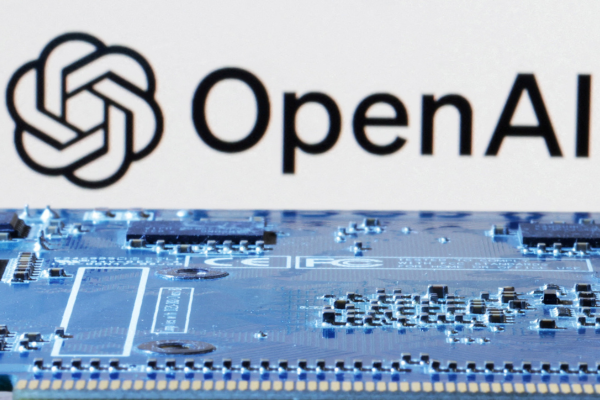How to leverage AI to automate human decisions
Sponsored by TrueCue
Decisions are becoming increasingly more connected, more contextual and more continuous than ever before, with Gartner reporting that 65 per cent of business decisions made in 2020, were more complex than they were two years ago.[1]
As a result, this has exposed the vulnerabilities of the decision-making process and accelerated the need for the process to be re-engineered, in order to achieve dramatic improvements in critical, contemporary measures of performance, such as business value, cost, quality, service, and speed.
What do we mean by re-engineering the decision-making process?
Traditionally, the typology of decisions has followed a vertical alignment, from the strategic, to the tactical, to the operational. Strategic decisions drive tactical decisions, which in turn drive operational decisions. Conversely, operational feedback validates tactics, and tactical feedback validates strategy. Each type of decision has its own process, its own people, and its own dynamic.1
But this traditional view is becoming outdated as operational decisions are becoming far more contextual, and strategic decisions are becoming more continuous. The traditional categories are starting to share characteristics, so organisations are being forced to acknowledge the new landscape of the decision-making ecosystem, which now has to consider the inclusivity, flexibility, reliability, accuracy, transparency, personalisation, scalability and speed of the decisions they make.
How does this look in practice? Well, there are many business outcomes organisations will benefit from when they begin to rethink their decision-making processes in a more connected, contextual and continuous way.
These include, but are not limited to:
- Making the decision-making process more inclusive, by acquiring a wider variety of data perspectives, to gain a better understanding of how decisions affect each other
- Designing a more transparent process, to ensure decisions are auditable and explainable for others, enabling clearer accountability
- Establishing a flexible process, to keep options open to adapt to multiple plausible futures, ensuring organisations are more prepared and resilient for future uncertainty
- Ensuring the decision-making process is more accurate, by including more data and more advanced modeling capabilities, so that decisions are more reflective of complex reality
Whatever the business outcome, there is no refuting that decision-making is a core capability which every organisation, and everyone within that organisation, needs to master. Advancements in technology, specifically in AI, will have a huge role to play in achieving that capability, as the practices of decision intelligence and decision modelling become key competitive differentiators in an increasingly digitalised economy.
Demystifying AI decision making
The idea of relying on AI to make “human” decisions can be an uncomfortable concept for many people. AI has, however, already been widely used to simulate processes that humans had previously had a monopoly on.
Self-driving cars rely on new technology that involves making decisions that were formally down to humans using a series of algorithms – when to accelerate, brake, turn and what speed to travel at.
This type of decision making can be translated into everyday business, and tends to fall into two categories: logical and emotional.
Logical decisions
Logical decisions are usually based on indisputable data, and an outcome is reached using a series of predefined rules.
Previously human processes such as insurance premium calculations and loan approvals are now done by AI. Rather than having to speak to someone at a bank, customers can input their information into a calculator on the website and have the decision made far more efficiently.
In these types of process, AI provides speed and consistency and requires little manual intervention. Self-driving cars are examples of logical decision-making carried out by AI – they follow the pre-defined rules of the road and execute subsequent tasks according to those rules.
Emotional decisions
When it comes to using AI to make human decisions, the process is based more around decision support and the provision of insights and information.
Large companies such as Netflix, Amazon and Spotify make use of recommendation engines. The AI used does not make decisions for the customer but presents the customer with choices and a potential outcome.
AI allows humans to come to a decision by exploring the possibilities, and acts as a guiding hand rather than intervening.
Steps to take
To small and medium-sized businesses with a low level of data and analytics maturity, it may seem a distant dream to leverage AI effectively to make humanlike decisions. This sense of overhyping AI is a sign of low maturity and can paralyse an organisation to making initial steps.
According to McKinsey, “Two-thirds of the opportunities to use AI are in improving the performance of existing analytics use cases.”[2] AI analytics takes existing analytic methods and pushes them to the next level. AI can work faster, combine more data sources and process vast quantities to uncover patterns that were once undetectable.
To really succeed in leveraging AI an organisation must understand its desired business goals. Identifying the organisation’s AI ambition is integral to realising where to invest money and time. Across the board, the organisation needs to align its goals to achieve effective AI analytics integration.
This will cause decision making to become more data-driven and built on solid analytical practices, rather than solely on high-level executive hunches and gut instinct.
As well as deciding on the desired business outcomes to come from AI analytics, awareness throughout the organisation needs to be achieved. If the value of AI analytics implementation is realised and individuals across departments are upskilled, then the fear of AI will decrease and become normalised. This will allow the analytic insights from AI to be more readily trusted across the organisation.
From this point, the use of AI can be stabilised and eventually expanded to a point where it is widely applied throughout the organisation. The aim is to make the use of AI as commonplace as using computers. The more advanced the analytics, the more nuanced the insights will be.
AI and human decision making should complement rather than conflict with each other – ambition, awareness and widespread implementation can help attain this.
Taking advantage of AI analytics and scaling up the use of it will give organisations an edge over competition.
The key to succeeding with implementation is to remember that the relationship between human and AI decision making must be synergetic. With decision making becoming more complex, the practices used to reach outcomes must be as well.
If organisations want to effectively improve their decision-making process, they shouldn’t start with technology. Take a people and business-first approach, focusing on the desired outcomes, before figuring out the steps to get there.
For more information please click here.
1. The Future of Data and Analytics: Reengineering the Decision. Gartner, 2020
2. Notes from the AI Frontier: Applications and value of deep learning. McKinsey, 2018

Business Reporter Team
Most Viewed
23-29 Hendon Lane, London, N3 1RT
23-29 Hendon Lane, London, N3 1RT
020 8349 4363
© 2024, Lyonsdown Limited. Business Reporter® is a registered trademark of Lyonsdown Ltd. VAT registration number: 830519543






